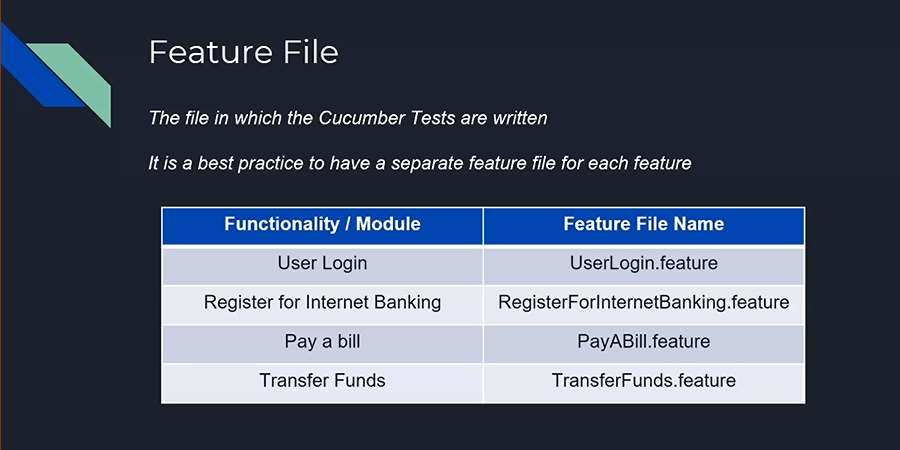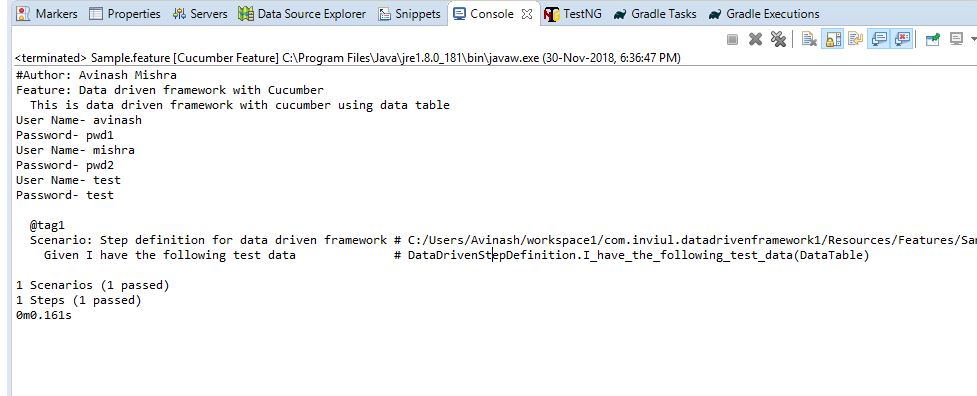

If the plugins are not installed, switch to the Marketplace tab, type their names in the search field in the specified order, and click Install next to each of them.Ĭlick Apply to save the changes and close the dialog. Switch to the Installed tab and make sure that the following plugins are enabled (the plugins must be enabled in the specified order):Ĭucumber for Groovy (optional: install this plugin if you want to create step definitions in Groovy) Press Control+Alt+S to open the IDE settings and then select Plugins. You can use either Maven Surefire or Failsafe plugin to execute the runners. In JUnit the feature files are run in parallel rather than scenarios, which means all the scenarios in a feature file will be executed by the same thread. Set up an environment for testing your hosted web pages using Cucumber framework with TestNG and Selenium. In IntelliJ Community, the necessary plugins are not bundled, that is why you need to install and enable them. JUnit 4 Cucumber can be executed in parallel using JUnit and Maven test execution plugins.

However, we recommend you to make sure that they are switched on. I am trying to write a custom TestNGCucumberRunner (for the latest version cucumber 4.2.6) where I can filter the list of cucumberfeatures based on runtime arguments, in the getFeatures() method. However, there is a slight difference between the name of some of the annotations, but their working remains the same. TestNG simplifies writing tests by providing Annotations. It is inspired by JUnit and is developed by Cdric Beust. This stack can be used to automate the testing of web applications, using Selenium to interact with the browser, TestNG to manage and organize the tests, and Cucumber to provide. TestNG is a comprehensive testing framework written in Java that can be used for writing unit tests, functional tests, integration tests, and end-to-end tests. In IntelliJ Ultimate, the required plugins are bundled and enabled by default. Both TestNG and JUnit implement annotations, and they work quite similarly in both of them. Selenium TestNG Cucumber is a testing stack that combines the Selenium browser automation tool, the TestNG testing framework, and the Cucumber acceptance testing tool. Uncheck Create from archetype, If you prefer to use an archetype you can use maven - archetype. In this tutorial, we’ll look at the Before, BeforeStep, AfterStep, and After Cucumber hooks. I continue to keep on running into the issue where testNG fails to find the matching glue code. In the below example, the test case method will be under the group named ' group1 '. Cucumber hooks can come in handy when we want to perform specific actions for every scenario or step, but without having these actions explicitly in the Gherkin code. I wanted to run my cucumber features with TestNG for parallel execution. Import be able to use Cucumber in your application, make sure that the necessary plugins are enabled and add the Cucumber library to your project. Cucumber with Selenium LambdaTest Cucumber before and after hooks usage - Stack Overflow Before vs BeforeClass. The answer to such TestNG interview questions is that we define the Groups in TestNG by passing the ' groups ' parameter to the Test annotation with the value being the group name.


 0 kommentar(er)
0 kommentar(er)
